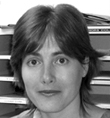Department of Mathematics
Mathematics Colloquium - Spring 2003
Thursday, February 20th, 2003
10:00am - 11:00am, in Healey LL-2 Presentation Room 2
10:00am - 11:00am, in Healey LL-2 Presentation Room 2
Terje Hoim
Trinity CollegeLarge Orbits under a class of isometries of $L^{1}\,[0,1]$
Abstract:
One of the fundamental problems in Operator Theory is the Invariant Subspace Problem, which asks whether every bounded linear operator on an infinite dimensional Banach space admits a closed non-trivial invariant subspace. Recall that a subspace $Y$ of $X$ is \textit{invariant} by $T:X \rightarrow X$\, if $TY \subset Y$.\, The study of invariant subspaces can be seen as a study of particular properties of orbits of operators. We study the orbits of isometries of $L^{1}\,[0,1]$.\, Every isometry of $L^{1}$\, can be written as $Tf=h(f \circ \tau)$.\, When $\tau$ is not measure preserving, we show that the set of functions $f$ in $L^{1}\,[0,1]$ for which the orbit of $f$ under the isometry $T$ is equivalent to the usual canonical basis of $l^{1}$ is an open dense set. In the proof we develop a new method to get copies of $l^{1}$\, inside $L^{1}\,[0,1]$\, using geometric progressions. This method does not use disjoint or relatively disjoint supports, which seems to be the most common way to get copies of $l^{1}$\, inside L^{1}\,[0,1]$. A similar problem is also studied for other classical Banach spaces.
 |
Department of Mathematics University of Massachusetts Boston Phone: 617-287-6460; Fax: 617-287-6433 Information: math@umb.edu |
||
